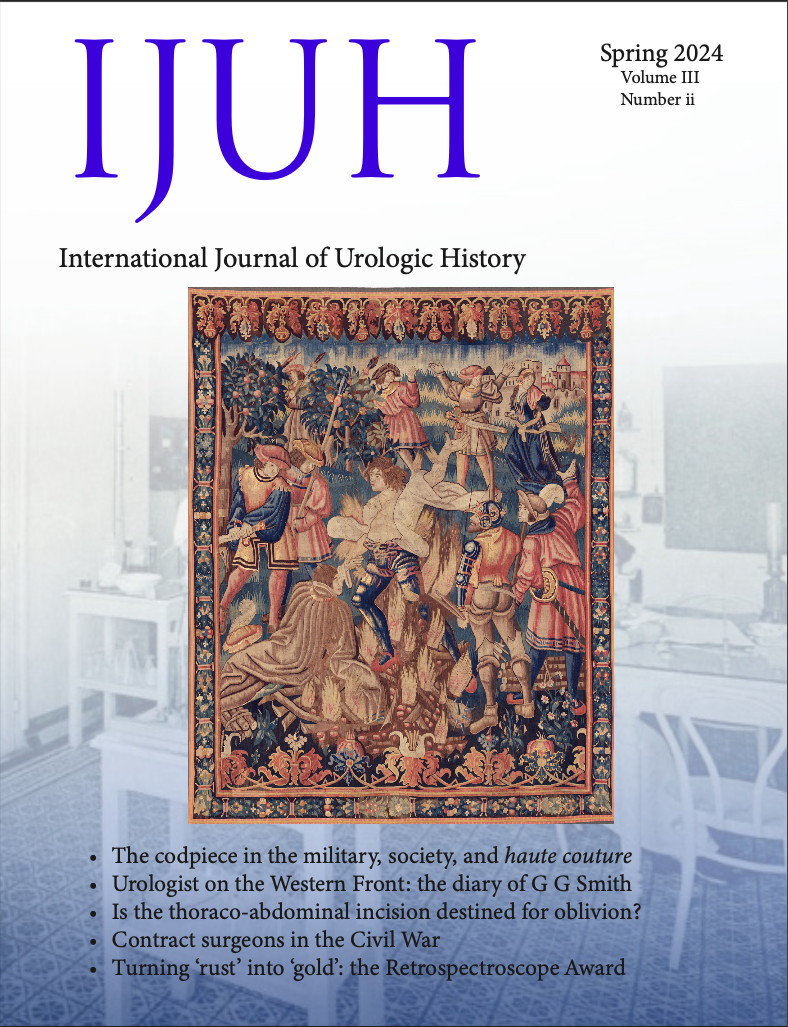IJUH
International Journal of Urologic History
History of Sacral Neuromodulation in Urology
Raymond Lay, Adam Visca, Gareth Warren, Ronald Rabinowitz, Divya Ajay
First Published: July 1, 2022
DOI: 10.53101/IJUH.2.1.752202
Download PDF
Abstract
Objectives
Approximately 16.5% of the U.S. population is estimated to have overactive bladder (OAB), significantly impacting their daily life. Sacral nerve stimulation (SNS) has been a successful method of treating urge incontinence, urgency, frequency, and non-obstructive retention since its development. This article reviews the development of SNS from its inception to the procedure we know it as today.
Methods
We conducted a literature review using the PubMed database, Google Scholar, and JSTOR regarding the history of SNS and the discoveries leading to its development.
Results
As our ability to incorporate electricity into medical practice improved in the mid-1900s, the pressing question in urology was whether it could be used in treatment of the neurogenic bladder. Initial efforts focused on direct detrusor stimulation and pelvic nerve stimulation, with limited efficacy. In the 1970s, Drs. Emil Tanagho and Richard Schmidt found that stimulation of sacral nerves in dog models resulted in a detrusor contraction response, resulting in the voiding of urine. They focused on improving these techniques and published a paper in 1989 on the first use of SNS on human subjects, paving the way for our modern-day procedure. Eventually, Medtronic developed the InterStim system, which received FDA approval in 1997 for the treatment of urge incontinence. The basic SNS technique has since remained largely the same. In 2019, the Axonics Sacral Neuromodulation System was also approved for treatment of OAB symptoms as an alternative to the InterStim system. Given the efficacy of SNS in the treatment of OAB, further iterations of SNS devices were recently developed, such as devices with rechargeable batteries and prolonged battery life.
Conclusions
Since Tanagho and Schmidt first described its use, SNS has been and continues to be a successful method for treating OAB. Going forward, SNS will remain a viable option for the treatment of urge incontinence and retention.
Editor in Chief: John L. Phillips, MD
Journal Design: Akhil A. Saji, MD
DOI: 10.53101
US ISSN: 2769-2183
